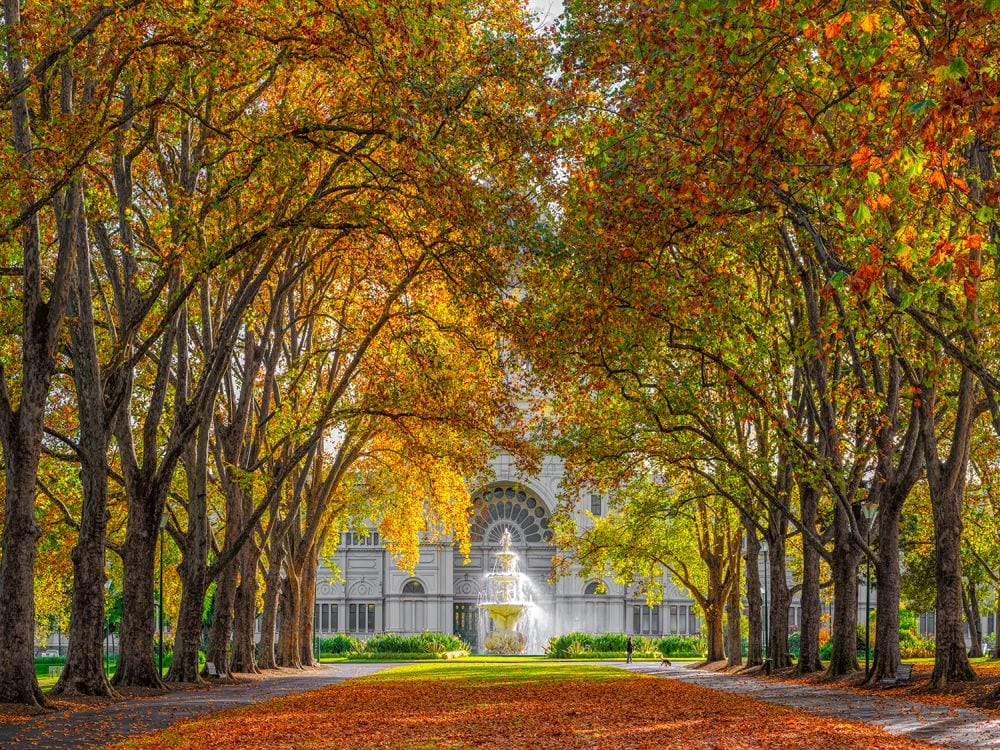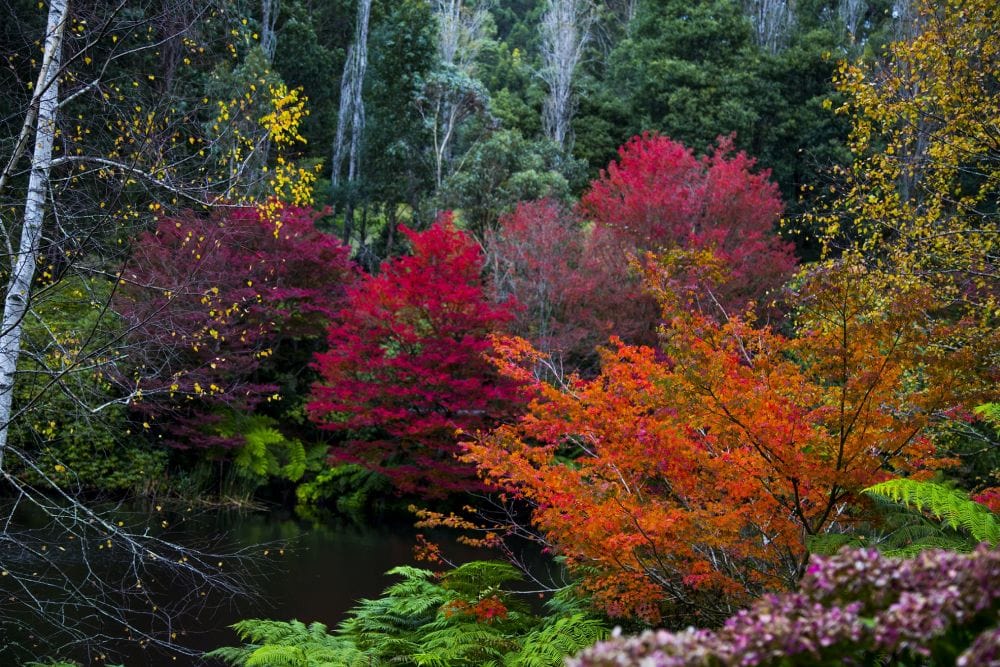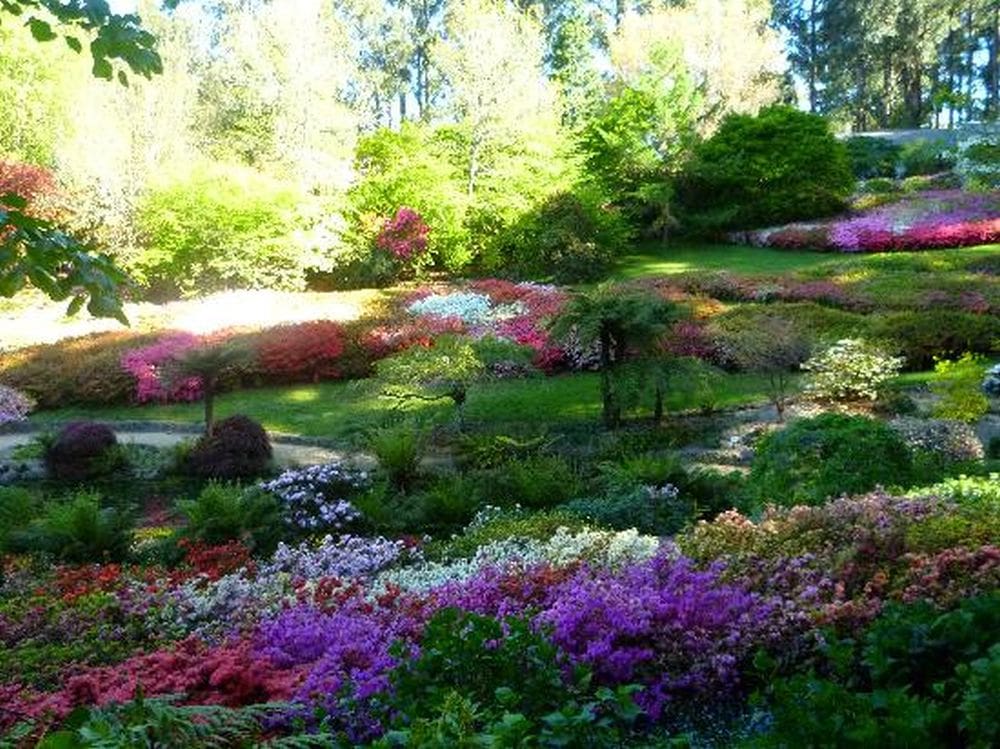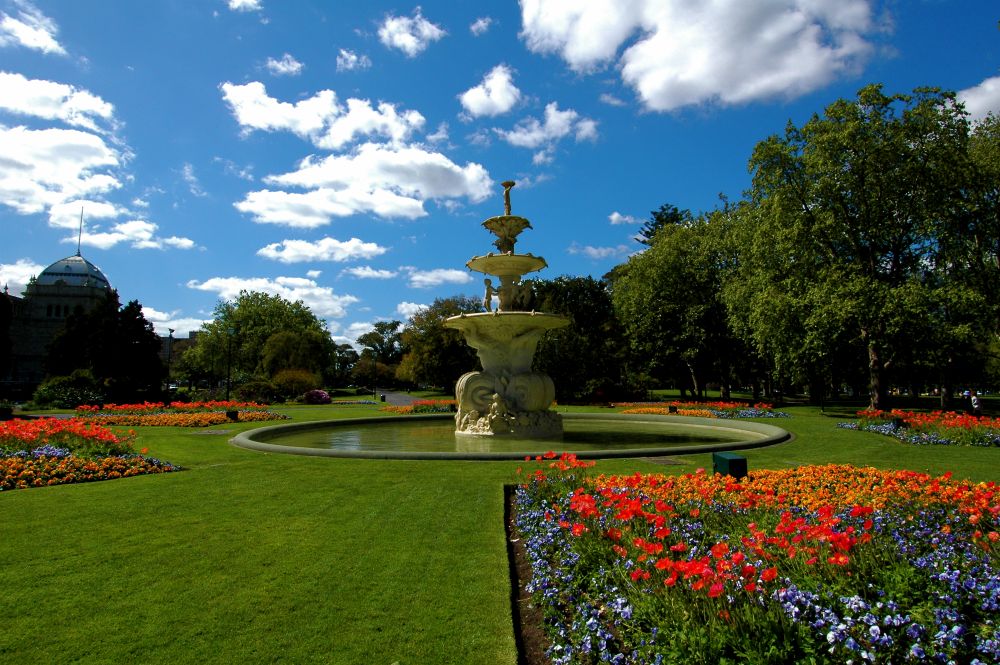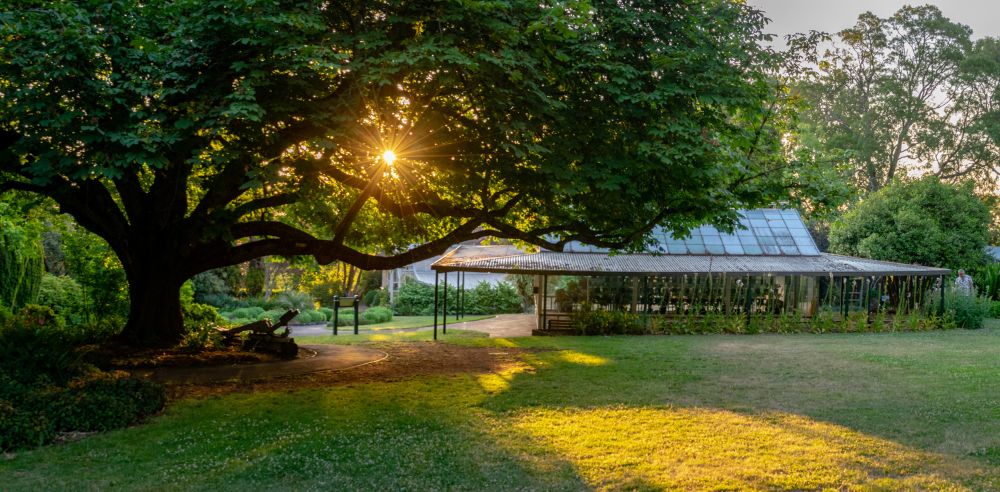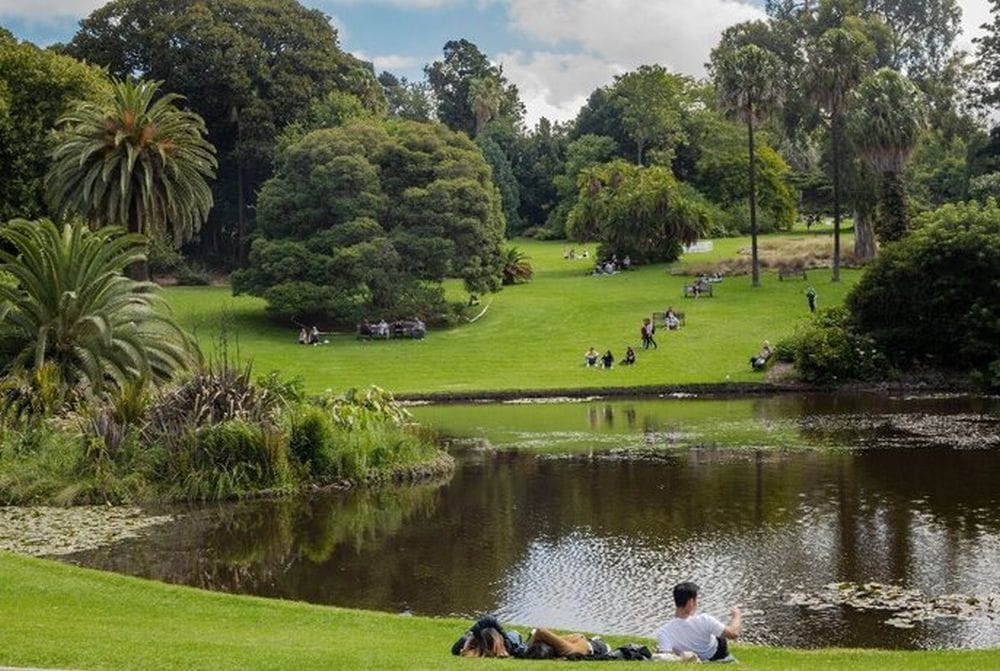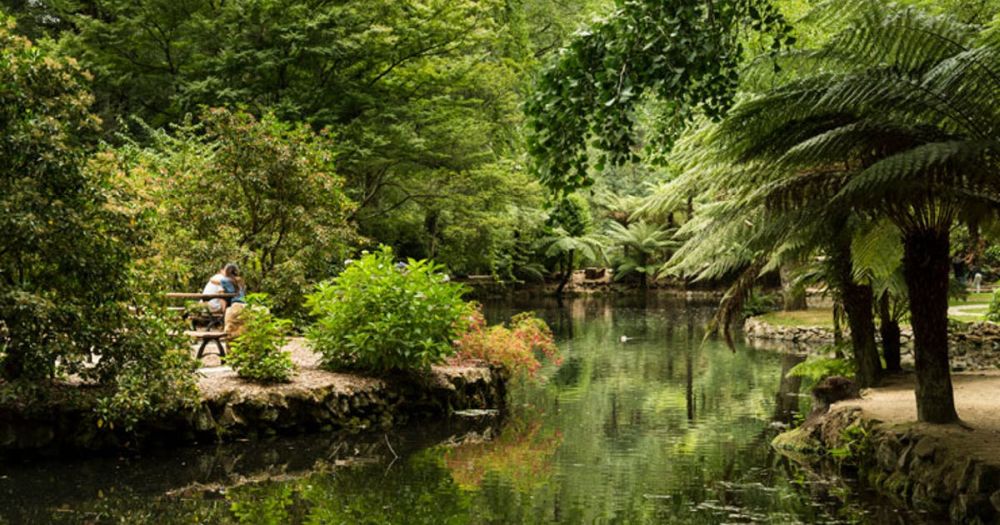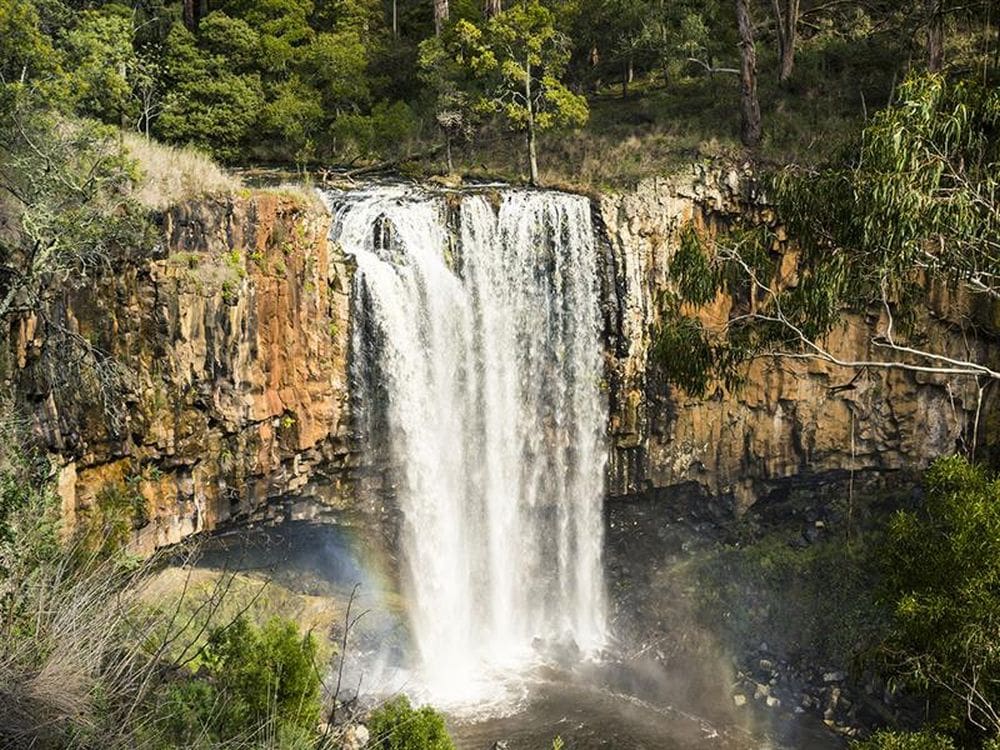Leaves are tumbling, and Autumn is knocking. A beautiful seasonal colour palette can be seen all throughout Melbourne. You can bet that your suburban street will soon be a riot of amber, scarlet, and gold colours now that the city is covered with Elm, Ash, and Maple trees brought here by homesick English hoping to recapture a little of their homeland.
While crisp autumn evenings are perfect for roasting marshmallows and sipping hot chocolate, the season also ushers in the crunch of crimson foliage and the splendour of golden gardens. Take advantage of the changing seasons by visiting one of these beautiful gardens and seeing the flowers change with the seasons.
FAQs About Melbourne
- Alfred Nicholas Memorial Gardens. Mount Dandenong. ...
- Gardens Of Glenlyon. Glenlyon. ...
- Tieve Tara. Mount Macedon. ...
- The Valley Of Liquidambers. Heathcote. ...
- Cloudehill. Dandenong Ranges. ...
- Maroondah Reservoir Park. Healesville. ...
- Walhalla Goldfields Railway. ...
- Fitzroy Gardens.
Try accessible spots near Banff National Park, which has mountains all around. One option is Johnston Canyon with its waterfalls, a creek, and limestone cliffs. Tunnel Mountain offers lovely views of Banff and Bow River.
Typically the first signs of leaves changing will occur in early March and there will be some colour around until late May and sometimes even early June. Typically the peak period for autumn colour is around mid-April through to early May but this can vary from year to year.
Australia's autumnal season officially starts on 1st March, and almost immediately the leaves change from verdant to vibrant reds, oranges and yellows. We asked travellers where the best places were for watching this glorious display, and this is what they told us.
Where To See The Best Autumn Colours In Melbourne
You can very much count on seeing "Autumn" mentioned as a favourite season among Melburnians if you ask them. The months of March, April, and May, when the days become shorter and the nights grow cooler, are ideal for donning warm layers and heading outside to take in the breathtaking displays of changing leaves.
An autumn in Melbourne is a sight to see. I think now is a great time to visit Victoria if you're from a more tropical part of Australia.
European tree species are often planted in parks and gardens in Melbourne and rural Victoria because, unlike our native flora, they put on beautiful displays of orange, yellow, and red before their leaves fall in Winter.
The beauty of Melbourne in the fall is easily accessible; simply visit one of the city's numerous gardens. Or, if you're looking for a day trip, you may load up the car with a picnic and go to the scenic peaks of the Dandenong or Macedon ranges.
Gardens of Alfred Nicholas Memorial
Aspro co-developer Alfred Nicholas was honoured in 1933 when the gardens were renamed in his honour. A rotunda, moss-covered ponds, sculptures, a hidden waterfall, and gorgeous bridges may all be found when exploring the 13-acre estate.
The charming boathouse and decorative lake, which shows the brilliant fall foliage, are the most photographed features of the park.
The Alfred Nicholas Memorial Gardens on the Burnham Beeches estate in the Dandenong Ranges are highly recommended by locals if you want to get in the fall spirit.
Rolling out beneath a canopy of Mountain Ash Trees, all of them in full multicoloured beauty, are the trails that intersect the beautiful gardens.
Also included in the Gardens are a beautiful boathouse and ornamental lake, perfect for a family snapshot.
In addition to the ginkgoes, maples, and liquid ambers that give transeasonal foliage, there are many more exotic blooming plants, trees, and bulbs that provide colour throughout the year.
Tieve Tara Gardens
The original Tieve Tara Garden was established in the '60s, but fires in 1962 & 1983 changed the garden's history.
So, the 7-and-a-half-acre area has been turned into an own vineyard where wild ducks and Toulouse geese roam free and shiny foundations dot the countryside. These trees, as well as others like maples and creepers in the region's gardens, provide a burst of colour in the fall.
During this season, the garden is transformed into a riot of colour, with vibrant shades of red, orange, and yellow dominating the landscape. Between March and May, the gardens are constantly changing in response to the varying weather conditions, making for a unique and exciting experience each time you visit. As the wisteria leaves around the bridge transform from green to yellow, the Monet-style bridge itself undergoes a radical transformation. This is a work of art.
Gardens of National Rhododendron
Every season brings a burst of colour to the world-renowned National Rhododendron Gardens. The Olinda Gardens features azaleas, rhododendrons, daffodils, camellias. The addition of cherry tree groves and deep fern gullies enhances these gardens, which already feature an array of textures and colours.
The gardens are home to some of Australia's most iconic and unique plant and animal species. In addition to the varying seasonal flowers, this park is home to a number of garden and fern gullies.
The garden is a popular winter destination for those seeking to see the endangered lyrebird. More than king parrots, ducks, peacocks, and red rosellas, there are many other types of birds can be seen there.
Cloudehill
The magnificent Peony Pavilion and the fragrant Azalea Steps are just two examples of how Cloudhill's focus on variety and harmony has shaped the garden. The park in the Dandenongs is a blaze of colour when the Yokohama Maples turn scarlet and the decorative grasses turn amber in the fall. The hedges, meadows, and flower beds of Cloudhill are also notable.
Maroondah Reservoir Park
One of the most beautiful parks in the Yarra Valley, Maroondah Reservoir Park is home to a variety of native and exotic vegetation.
The Rose Stairway is at its most photogenic in the fall, while the rhododendrons and azaleas are at their finest in the spring. Wombats, echidnas and wallabies are just few of the natural Australian animals that call the park home.
Castlemaine Botanical Gardens
The National Trust includes an oak planted in 1867 by the Duke of Edinburgh in the Castlemaine Botanical Gardens, which were designed by the eminent botanist Baron Sir Ferdinand von Mueller. During the fall, the canary yellow leaves reflect beautifully off of the decorative lake that is part of the manicured gardens.
Carlton Gardens
The Carlton Gardens, the site of the 1880 Melbourne International Exhibition, is home to the IMAX Theater, the Royal Exhibition Building, and the Melbourne Museum. Water features include French and Hochgurtel Fountains, as well as more exotic varieties of Moreton Bay, elm, and palm trees, all of which can be found on the 64-acre estate.
The World Heritage-listed Carlton Gardens are just a short walk from the Melbourne Museum and Royal Exhibition Building. It is not uncommon to see newlyweds taking photos in front of the Hochgurtel Fountain, a Victorian-era water feature at the end of the avenue, which has been a popular spot for weddings ever since it was built in 1896.
If you're there for a picnic, a playground, a tennis court or a shortcut through the park from Nicholson Street, it's a popular destination for fall leaf viewing.
Gardens of Wombat Hill Botanical
Wombat Hill Botanic Gardens, perched on an old volcano, provides breathtaking views of Daylesford below. It is one of Victoria's most stunning regional gardens, with sprawling open lawns framed by elms and evergreens, and a charming, historic feel reminiscent of the 19th century.
Wombat Hill Botanic Gardens, established in the 1860s by Baron Ferdinand Von Mueller (who also founded Melbourne's Royal Botanic Gardens), are a must-see while in Victoria and are regarded as the best rural tourist gardens in the state. Views of Daylesford and the surrounding landscape may be seen from several vantage points. The gardens are well regarded for their beauty and peace, and they have managed to preserve their elegant 19th-century ambience.
Lake Daylesford
Lake Daylesford, established in 1929, is a beautiful spot for relaxation. The walkway that goes around the lake is flanked by trees that have had plenty of time to develop their brilliant fall colours.
The luxury Lake House is on the lake's edge, providing breathtaking views. Stroll down to the pier for sweeping vistas of the lake and to keep a look out for local avian residents.
Lake Daylesford is an excellent location for some R&R by the lake. You can rent paddleboats, there's a playground for the kids, there are covered grills, and on the weekends there are often weddings to see. It takes around 45 minutes to stroll around the lake's tree-lined walkway at a leisurely pace, stopping to take in the scenery at a few spots (the jetty is a great one).
Where to See Melbourne's Fall Colors
Melbourne's Royal Botanic Gardens
Without a question, the most popular and cherished green space in the city. Covering an area of about 38 hectares, over 8,000 distinct plant species can be found there, representing every continent and corner of the world. The city's most popular park, which is known for its vibrant fall displays, is a great place to spend time in any season.
The Botanic Gardens host an Aboriginal Heritage Walk where visitors may learn about the history and culture of the Koolin people. The native flora and faun will be a big part of your guide's lesson today.
It's a major draw for visitors, but even native Melburnians occasionally fail to give it the respect it deserves. Because a stroll around all the Royal Botanic Gardens span a total of 38 acres might be exhausting for small children, a stroller for tiny legs may be useful to provide a thorough viewing of the 50,000 plants on display. Picnic baskets should not be forgotten!
Melbourne's Royal Botanic Gardens, widely regarded as among the greatest botanical gardens in the world, are lovely and peaceful throughout the year, but the changing of the seasons adds a special magic to this iconic attraction. With more than 6,000 different tree species spread out throughout the verdant landscape, the bright wealth of fall colours makes for a breathtaking sight.
There is also a leaf pile for children to play in and a variety of nature-based sensory activities in the Ian Potter Foundation Children's Garden.
Fitzroy Gardens
A tranquil haven within a few minutes' walk from Melbourne's busy CBD. The gardens are reminiscent of Victorian-era landscaping, and they include a rotunda, a café, a conservatory, a model Tudor hamlet, the English home of Captain James Cook, a fairy tree, fountains, sculptures, and an ornamental lake. Children will have a blast jumping into the leaf piles created by the elms that border the walkways.
Fitzroy Gardens is a 64-acre oasis of greenery on top of what was formerly a muddy stream that flowed into the Yarra River. In addition to its stunning tree-lined avenues, the park also has an ornamental lake, café, conservatory, model Tudor hamlet, fairy tree, fountains, sculptures, and a rotunda, all of which are reminiscent of Victorian-era design. The best way to spend a fall weekend!
The majestic elms that border these boulevards create a crisscross pattern that echoes the union flag and provides some of the best views of the changing leaves. Extremely large leaves fall, making for great romping and tossing.
Where to Stay in Melbourne Close to the Botanical Gardens?
The Royal Botanic Gardens are just nearby, and you can look out over Melbourne's fall foliage at the nearby Shrine of Remembrance. The NGV, the TSC, and the CBD are all within walking distance from this hotel on St. Kilda Road that has self-contained flats.
Dandenong Ranges
Seven beautiful gardens may be found around 40 kilometres Eastern Melbourne in the Dandenong Ranges. Against the backdrop of the gorgeous Dandenongs and rolling hills, each garden displays blazing hues.
Experience the changing of the seasons in the mountain communities, which blossom with colour in the spring and are blanketed in a gentle white blanket in the winter. Spend some time in the galleries and boutiques of Olinda, Belgravia, and Sassafras to soak in the artistic atmosphere and peruse the unique selection of jewellery, furniture, and glassware.
Look out over the city's sparkling vision of fairy lights from SkyHigh atop Mount Dandenong and reflect on how far you've come.
From your hillside home or sun-kissed garden, you can watch the iconic Puffing Billy steam locomotive chuff down its narrow-gauge track. You may either act like an adult and ride in first class, or jump on board and dangle your feet out the open windows of the carriages.
Accessible in less than an hour by public transportation, these gardens are open all week long. Autumn is the best time to visit the Alfred Nicholas Gardens, the Dandenong Ranges Botanic Garden, the RJ Hamer Arboretum, and the George Tindale Memorial Garden.
Where to Stay in the Dandenong Ranges?
Indulge in a night at the cosy A Loft In The Mill – This lovely bluestone mill and carriage house is a reproduction of a structure originally built in the Tudor style in the 19th century. Situated in the middle of the Dandenong range, Olinda is a beautiful place to visit. There are many different types of suites available, each with its own unique design and some even with a fireplace. A breakfast tray with continental fare is included. Ideally suited for a couple's weekend escape.
Seawinds Gardens at Arthurs Seat
Visitors are taken on a tour of both groomed gardens and natural landscapes. This is a favourite hangout spot because of the views of Port Phillip Bay and the garden sculptures. Near Melbourne, on the Mornington Peninsula, you'll find the 34-hectare Seawinds Gardens within Arthurs Seat State Park, which is about an hour and fifteen minutes away.
The old home of Coolart is located in a beautiful garden little over an hour from Melbourne, with neighbouring wetlands, forests, and grassland. The Homestead grounds are the ideal spot for a peaceful picnic, and paths connect to the beach, lagoon, and wetlands. The vivid colours of the leaves convert into all the colours of nature, making autumn the finest season to visit.
Where to Stay in the Mornington Peninsula?
Lodge in tranquilly on the Mornington Peninsula in Victoria at the 4-star Lancemore Lindenderry Red Hill, which is located on a 30-acre estate in the suburb of Red Hill. In addition to its indoor pool and spa, Lindenderry also has gardens, a winery, private vineyards, lawns, and more. There is a complimentary breakfast of gourmet cuisine.
Macedon Ranges
Located in the heart of Macedon, the Avenue of Honour is a beautiful boulevard surrounded with trees that ultimately connects to Mount Macedon Road. It is a lovely avenue of oak trees that commemorates those from Mount Macedon and Macedon who served in World War I.
A short drive from Melbourne will bring you to the Macedon Ranges, a visually and aurally stunning area that will make you feel completely at home. There are five senses: smell, hearing, sight, and touch. Taste artisanal foods and products, sip wines from a cooler temperature, marvel at historic vistas and vast forests, catch a sight of native Australian animals, and inhale a healthy dose of pure air in our stunning, undulating landscapes.
The Macedon Ranges are an excellent destination since they are both active and peaceful.
During the months of April and May, the region's peak tourist season, temporary traffic control measures are in place to offer the greatest possible experience for all of the guests.
Tieve Tara
Spread out across seven and a half acres of trees, lakes, and rolling lawns, the Gardens of Tieve Tara ebb and flow with the changing of the seasons. Check their Facebook page for instructions on when to visit what is perhaps the most well-known private garden in all of Macedon this fall.
Where to Stay in the Macedon Ranges?
Visit the Macedon Ranges and soak in a spa tub while taking in the breathtaking scenery. Facilities include an indoor pool and open fireplaces, and rooms are spacious. An on-site day spa where guests may get manicures and facials is offered. The ideal weekend getaway for the ladies.
Yarra Valley
When the grapes are being harvested in the Yarra Valley in the early fall, the scenery is at its most picturesque. When the grapes are golden and the sunsets are stunning, the area is at its most gorgeous. Glamping in a Belle Tent or a Glamping Cabin is a great way to see the Yarra Valley.
Maroondah Reservoir Park
Around 1 kilometre from Healesville's downtown, you'll find Maroondah Reservoir Park, a hidden treasure that nobody seems to know about. Gardens containing exotic and native tree stands, hiking trails, and native plant and animal life. It's the ideal picnic spot, what with all the open grass and playground equipment.
Where to stay in the Yarra Valley?
Balgownie Estate Yarra Valley Accommodation – Luxury Yarra Valley lodgings may be found at Balgownie Estate, which is situated on a picturesque, award-winning vineyard. Wine bar, day spa, restaurant and spa bath are all available on-site. Guests may stay in one of the suites including a Jacuzzi tub, kitchenette, and scenic views of Yarra Valley.
This Yarra Valley Wine, Bubble, and Gin Tour will give you a comprehensive introduction to the region. A local driver and guide will pick you up from your Yarra Valley hotel and take you on a tour of five wineries.
Go at The Fawkner Park
There are numerous mature trees in this park in South Yarra near the Central Business District, including elms, oaks, poplars, and Moreton Bay Figs, as well as a network of meandering walkways ideal for families on a day out.
Fawkner Park is home to a picturesque forest aglow with the colours of autumn, making for a really unforgettable environment. The result is reminiscent of a European village green, perfect for leaf-peepers; there are plenty of opportunities for joyful planning among the park's athletic fields, playgrounds, and café.
Visit The Ardrie Park
The term "leaf angels" has been bandied around. Originally planted in one of the green suburb's adjacent streets, arranging Ardrie Park's shaded lane of magnificent elm trees dates back to 1918, when it was moved to its current location. The fallen leaves of autumn create a colourful and textural carpet on the ground. Because there are so many leaves, this location is perfect for a family's picture session or just some good old-fashioned fun.
The park is a bit of a secret amongst the residential neighbourhoods of Malvern East. This large and beautiful park has a dog park and a BBQ area in addition to a toddler-friendly playground.
Explore Cloudehill Nursery and Garden
The perennial borders at Cloudehill Nursery and Garden remain lush until far into March before softening to "fall effects," making it another another breathtaking location for autumn colours.
Decorative grasses and weeping maples both change colour when the sun sets, while the grasses themselves shift to shades of beige and tawny red. Large Enkianthus perulatus bushes besides the summer cottage go from a muted purple to a slow-burning scarlet as fall approaches; the temple lake is awash in shades of pink and yellow as their leaves fall into the water. Another friendly reminder to keep an eye on that camera!
Last of the maples explode in a silky pink and crimson blaze, while beech trees around the gardens turn a rich russet colour. Amidst the golden browns and lemon yellows, the last of the summer's salvias wistfully wave farewell as they slip into dormancy for the winter.
Conclusion
Amber, scarlet, and gold will soon adorn the suburban streets of Melbourne. Visit one of these gorgeous gardens to take advantage of the changing seasons. The planting of European tree species is common in Melbourne and rural Victoria's parks and gardens. During the autumn months, they put on a stunning display of orange, yellow and red leaves. Cloudehill Gardens, Tieve Tara Gardens and Olinda Garden are some of the most popular tourist destinations in Australia....
The gardens are ever-changing, and each visit is a new adventure due to the continuously shifting weather conditions. Picnics and grills are a favourite pastime in Carlton Gardens. Perched high above Daylesford, the Wombat Hill Botanic Gardens offer stunning views of the city below. Castlemaine Botanical Gardens, home to a Duke of Edinburgh oak planted in 1867, is managed by the National Trust. Baron Ferdinand Von Mueller founded Wombat Hill Botanic Gardens in the 1860s, and now it is considered one of Victoria's best rural tourist gardens.
For their beauty and tranquilly, the gardens have managed to retain their 19th-century charm. If you're looking for some peace and quiet, head to Lake Daylesford. In East Melbourne, Victoria, Australia, just south of the CBD, you'll find the 26-hectare Fitzroy Gardens Park. They have fountains, sculptures, and a decorative lake in the style of Victorian-era landscaping, and there is a rotunda with a cafe and a conservatory as well. The Dandenong Ranges, around 40 kilometres east of Melbourne, are home to seven stunning gardens.
You may see the famous Puffing Billy steam locomotive chugging down its narrow-gauge track from your hillside house or sun-kissed garden. The Royal Botanic Gardens are nearby, and the neighbouring Shrine of Remembrance offers spectacular views of Melbourne's autumn foliage. The 4-star Lancemore Lindenderry Red Hill in Victoria's Mornington Peninsula is a calm place to rest your head. Since the Macedon Ranges are both dynamic and serene, they make a great destination. This area has a total area of 1,748 square kilometres.
The Yarra Valley is at its most gorgeous when the grapes are being harvested. Exotic and native tree stands, hiking pathways, and native plant and animal life can all be found at Maroondah Reservoir Park. Fawkner Park is home to a beautiful woodland that is especially beautiful in the fall. The majestic elm trees that line Ardrie Park's shady lane date to 1918. Late winter and early spring are the best times to see Cloudehill Nursery and Garden's perennial borders. Pink and yellow hues fill the water of the temple lake as the autumn leaves of the trees fall into the water.
Content Summary
- Autumn has arrived, as seen by the tumbling leaves.
- Melbourne is decked out in a stunning array of autumnal hues.
- Make the most of the changing seasons by visiting one of these gorgeous gardens and observing how the flowers change throughout the year.
- Where To Go In Melbourne To See The Best Fall Colors
- If you poll Melburnians, you're almost certain to hear "Autumn" cited as a favourite season.
- It's a beautiful sight to watch autumn in Melbourne.
- The best time to visit Victoria, especially if you're from the tropics, is right now, in my opinion.
- As a result of their spectacular displays of orange, yellow, and red before the leaves fall in the winter, European tree species are frequently planted in parks and gardens throughout Melbourne and rural Victoria.
- Visit one of Melbourne's many gardens to take in the city's autumn splendour.
- For a day excursion, pack a picnic and head to the Dandenong or Macedon hills, which have stunning views.
- In 1933, the gardens were renamed in honour of Aspro co-developer Alfred Nicholas.
- Residents of the Dandenong Ranges recommend visiting the Burnham Beeches estate's Alfred Nicholas Memorial Gardens if you want to get into the fall spirit.
- The Gardens also have a magnificent boathouse and an ornamental lake, ideal for a family photo.
- Tieve Tara Garden was established in the 1960s, but two fires in 1962 and 1983 altered its history.
- There are national rhodadendron gardens in the US
- The world-famous National Rhododendron Gardens blaze with colour throughout the year.
- Azaleas, rhododendrons, daffodils, and camellias abound in the Olinda Gardens in Los Angeles.
- The gardens are home to some of Australia's most well-known and rare plant and animal species. "
- This park is home to a number of garden and fern gullies, as well as a wide variety of seasonal flowers.
- During the winter months, the garden attracts a large number of visitors eager to catch a glimpse of the endangered lyrebird.
- It's possible to witness a wide variety of birds in addition to the common king parrots and ducks.
- The park is home to a wide variety of native Australian wildlife, including wombats, echidnas, and wallabies.
- Baron Sir Ferdinand von Mueller constructed the Castlemaine Botanical Gardens, which include a tree planted by the Duke of Edinburgh in 1867.
- The Gardens at Carlton
- The Carlton Gardens, a World Heritage Site in Melbourne, Australia, are located north-east of the CBD in the Carlton area.
- Heritage-listed Many people enjoy having picnics and barbeques in Carlton Gardens because of the variety of animals that live there, including brushtail possums.
- There is an IMAX Theater, Royal Exhibition Building, and Melbourne Museum in Carlton Gardens, which was once the venue of an international exhibition in 1880.
- The estate's 64 acres are home to French and Hochgurtel Fountains, as well as exotic kinds of Moreton Bay, elm, and palm trees.
- A short walk from the Melbourne Museum and the Royal Exhibition Building is the Carlton Gardens, a World Heritage Site.
- Daysford, Australia's Wombat Hill Botanic Gardens have been designated as a Victorian Heritage Site by the state government.
- Perched high above Daylesford, the Wombat Hill Botanic Gardens offer stunning views of the city below.
- With its wide open lawns bordered by elms and other evergreens, this is one of Victoria's most beautiful regional gardens. It has a quaint, old air about it.
- A must-see in Victoria, Wombat Hill Botanic Gardens were established in the 1860s by Baron Ferdinand Von Mueller (who also founded the Royal Botanic Gardens in Melbourne). They are often regarded as the best rural tourist gardens in the state.
- Waters of the Daylesford Reservoir
- The 1929-built Lake Daylesford is a wonderful place to unwind.
- The Lake House is located right on the lake's shore, allowing guests to take in the stunning scenery.
- If you're looking for some peace and quiet, head to Lake Daylesford.
- Melbourne Gardens got its start in 1846 when land on the Yarra River's south bank was set aside for a new botanic park.
- The city's most beloved and well-loved green park, without a doubt.
- Small children may tyre quickly from walking the 38 acres of the Royal Botanic Gardens; therefore, a stroller for short legs may be necessary to see all 50,000 plants on display.
- You can't forget about the picnic baskets!
- The Royal Botanic Gardens in Melbourne, widely regarded as one of the best in the world, are magnificent and serene all year round, but the cyclical nature of the seasons adds an extra layer of enchantment.
- The vibrant diversity of fall colours, created by the region's more than 6,000 distinct species of trees, is a sight to behold.
- The Ian Potter Foundation Children's Garden also features a leaf pile for children to play in, as well as a range of nature-based sensory activities.
- There is a 26-hectare park in East Melbourne, Victoria, Australia located just south-east of the city centre, which is known as the Fitzroy Gardens.
- There is a rotunda, a cafe, a conservatory, a Tudor village, Captain James Cook's English mansion, a fairy tree, fountains, sculptures, and an ornamental lake among the gardens.
- The elm trees that line the sidewalks have generated leaf heaps that will be perfect for leaping into by the neighborhood's young visitors.
- Located on top of what was once a dirty riverbed, Fitzroy Gardens is a 64-acre green haven.
- An ornamental lake, café, conservatory, Tudor-style village model, fairy-tree, fountains, sculptures and a rotunda are all part of the park's Victorian-era design, as are the tree-lined avenues.
- The Royal Botanic Gardens are nearby, and the neighbouring Shrine of Remembrance offers spectacular views of Melbourne's autumn foliage.
- The Dandenong Ranges, around 40 kilometres east of Melbourne, are home to seven stunning gardens.
- In the mountain settlements, which bloom in the spring and are coated in a soft white blanket in the winter, you may see the changing of the seasons.
- Indulge in the artistic ambience of Olinda, Belgravia, and Sasafras' galleries and boutiques, and examine the unique selections of jewellery, furniture, and glassware on display.
- Observe the city from atop Mount Dandenong's SkyHigh and reflect on how far you've progressed.
- Alfred Nicholas Gardens, Dandenong Ranges Botanic Garden, RJ Hamer Arboretum, and George Tindale Memorial Garden are all at their most beautiful in autumn.
- Enjoy a romantic evening in the charming The Mill Loft – Originally built in the Tudor style in the 19th century, this beautiful bluestone mill and carriage house is a replica of the original.
- Olinda, located in the centre of the Dandenong range, is a lovely destination to visit.
- Ideally suited for a weekend getaway with your significant other.
- Coolart's former residence is nestled in a lovely garden just over an hour's drive from Melbourne, with nearby wetlands, woodlands, and grassland all contributing to its natural beauty.
- A 30-acre estate in the Red Hill neighbourhood of Melbourne's Mornington Peninsula is home to the 4-star Lancemore Lindenderry Red Hill.
- Hanging Rock, an iconic geological formation, and the region's expanding artisan food and wine businesses make Macedon Ranges a sought-after tourist destination in Central Victoria, Australia.
- The Avenue of Honour, a tree-lined avenue running through the centre of Macedon, is the final link connecting Mount Macedon Road.
- Smell, hearing, vision, and touch are the five senses that every human being is endowed with.
- Since the Macedon Ranges are both dynamic and serene, they make a great destination.
- The Gardens of Tieve Tara, which cover seven and a half acres and feature trees, lakes, and rolling lawns, change with the seasons.
- Relax in a hot tub in the Macedon Ranges while admiring the stunning environment.
- The Yarra Valley is at its most beautiful in early October when the grapes are being harvested.
- The Yarra Valley is best experienced while glamping in a Belle Tent or a Glamping Cabin.
- Around 1 kilometre from Healesville's downtown is Maroondah Reservoir Park, a hidden gem that no one appears to know about.
- Land of Balgownie Accommodation in the Yarra Valley, Victoria Balgownie Estate in the Yarra Valley is home to luxurious accommodations and an award-winning vineyard.
- Your introduction to the Yarra Valley will be thorough with our Wine, Bubble, and Gin Tour.
- Your Yarra Valley hotel will arrange for a car and guide to pick you up for a winery tour that includes five stops.
- The Fawkner Park in Melbourne's South Yarra neighbourhood is a famous green space.
- When Ardrie Park's shaded path of beautiful elm trees was relocated to its current site in 1918, it was originally planted in one of the green suburb's neighbouring streets.
- In the fall, the ground is covered in a colourful and textured carpet of fallen leaves.
- This site is ideal for a family photo shoot or just some old-fashioned fun because of the abundance of leaves.
- Residents of Malvern East's residential areas don't know about the park.
- There's also a dog park and a BBQ area here, as well as a playground suitable for young children.
- Explore the nursery and garden at Cloudehill.
- This year, Cloudehill Nursery and Garden's perennial borders remain lush until far into March before softening to "fall effects," making it yet another stunning setting for autumn colours.
- When the sun goes down, the colours of ornamental grasses and weeping maples change, while the grasses themselves turn beige and rusty red.
- As autumn approaches, the leaves on the large Enkianthus perulatus shrubs next to the summer home turn a muted purple to a slow-burning crimson, and the temple lake becomes flooded in pink and yellow.
- The last of the summer's salvias longingly wave goodbye as they sink into dormancy for the winter, among the golden browns and lemon yellows.
